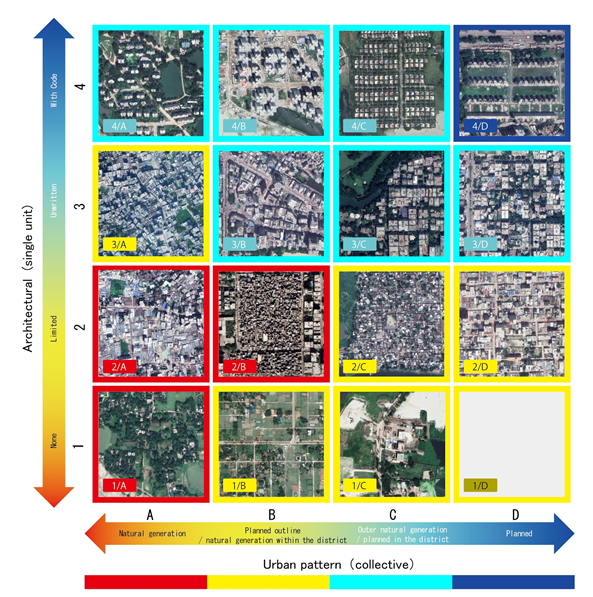Deep-learning coupled with novel categorization method to classify the urban environment of the developing world

With advent of high definition satellite images, high resolution data, novel computational methods such as deep neural network analysis, and hardware capable of high-speed analysis- urban planning is seeing a paradigm shift. Legacy data on urban environments are now being complemented with high-volume, high-frequency data. However, the first step of understanding urban space lies in useful categorization of the space that is usable for data collection, analysis and visualization. In this paper we propose a novel categorization method that is readily usable for machine analysis and show applicability of the methodology on a developing world setting.
Categorization to plan sustainable urban spaces should encompass the buildings and their surroundings. However, the state-of-the-art is mostly dominated by classification of building structures, building types etc and largely represents the developed world. Hence, these methods and models are not sufficient for developing countries such as Bangladesh where the surrounding environment is crucial for the categorization. Moreover, these categorizations propose small-scale classifications, which give limited information, have poor scalability, and are slow to compute in real time.
Our proposed method is divided into two steps-categorization and automation. We categorize the urban area in terms of informal and formal spaces and take the surrounding environment into account. 50km × 50km Google Earth image of Dhaka, Bangladesh was visually annotated and categorized by an expert and consequently a map was drawn. The categorization is based broadly on two dimensions-the state of urbanization and the architectural form of urban environment. Consequently, the urban space is divided into four categories: a) highly informal area; 2) moderately informal area; 3) moderately formal area; and 4) highly formal area. In total sixteen sub-categories were identified.
For semantic segmentation and automatic categorization, Google’s deep labV3 plus model was used. The model uses Atrous convolution operation to analyze different layers of texture and shape. This allows us to enlarge the field of view of the filters to incorporate larger context. Image encompassing 70% of the urban space was used to train the model and the remaining 30% was used for testing and validation. The model is able to segment with 75% accuracy and 0.60 Mean Intersection over Union (mIoU).
Qianwei Cheng, A K M M Rahman, Anis Sarker, Abu Bakar Siddik Nayem, Ovi Paul, Amin Ahsan Ali, Ryosuke Shibasaki, Moinul Zaber, “Deep-Learning Coupled with Novel Categorization Method to Classify the Urban Environment of the Developing World” has been accepted for “, ICRSETE 2020: International Conference on Remote Sensing, Environment and Transportation Engineering, Paris, France, 2020
Rahman AKMM, Zaber M, Cheng Q, Nayem ABS, Sarker A, Paul O, Shibasaki R. Applying State-of-the-Art Deep-Learning Methods to Classify Urban Cities of the Developing World. Sensors. 2021; 21(22):7469. https://doi.org/10.3390/s21227469
Cheng Q, Zaber M, Rahman AM, Zhang H, Guo Z, Okabe A, Shibasaki R. Understanding the Urban Environment from Satellite Images with New Classification Method—Focusing on Formality and Informality. Sustainability. 2022; 14(7):4336. https://doi.org/10.3390/su14074336
